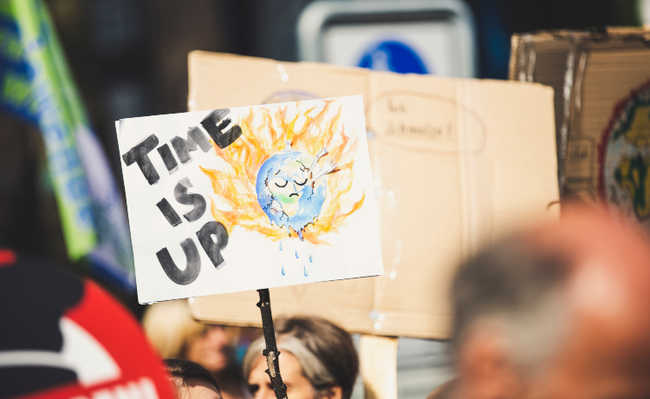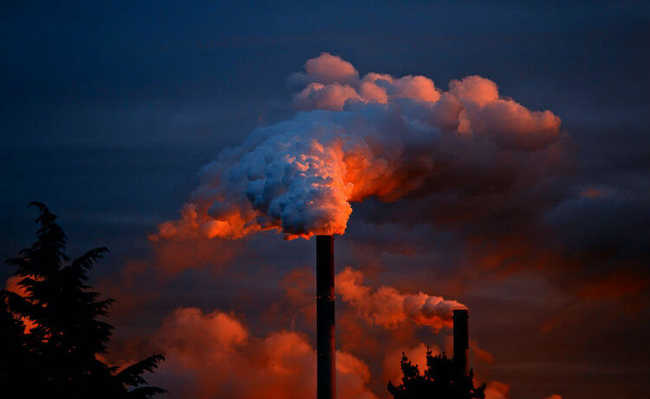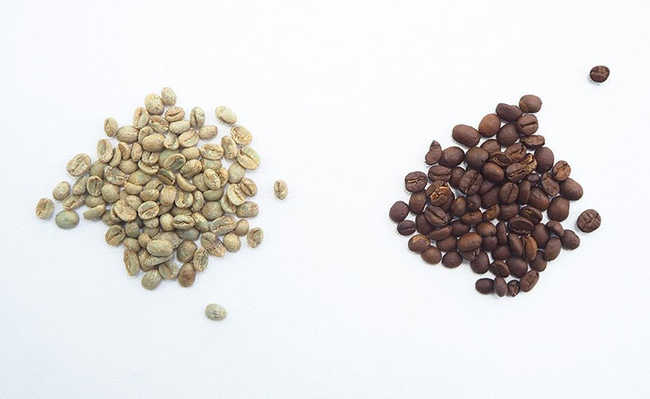What are short-lived climate pollutants?
Despite dissipating quickly, short-lived climate pollutants pose increasing risks

Image: Petra Brýdlová on Unsplash
Short-lived climate pollutants (PCVC), or short-lived climate pollutants (SLPC), in English, are called so because they are a group of atmospheric pollutants that have a relatively short life in the atmosphere, that is, they take days or decades to dissipate into the air. The main pollutants in this group have been drawing attention worldwide due to their harmful effects on health and the environment. They are black carbon, methane, tropospheric ozone and hydrofluorocarbons (HFCs). Let's understand a little more about each of them.
Major short-lived climate pollutants
black carbon
Its particles are formed by the incomplete combustion of fossil fuels and biomass. This short-lived climate pollutant can be emitted from a variety of sources, such as diesel cars, trucks and machinery; potteries and industries that use coal; forest fires and agricultural fires and even at home, when cooking and using heaters.
The impact that black carbon causes on the environment in terms of global warming is about 460 to 1.5 thousand times greater than that of CO2. In addition, it impacts the regional pattern of precipitation due to the influence on the circulation of clouds, making them heavier due to the soot that impregnates them. And more: this pollutant causes the clouds to absorb part of the sunlight that falls on it, and a “dimer” light ends up reaching the Earth.
When deposited on ice or snow, black carbon increases the rate of melting, but what is most worrying is the fact that it is one of the main components of particulate matter, which is one of the main causes of premature death in the world due to the factor. environmental.
Atmospheric lifetime: days to weeks.

tropospheric ozone
It is called this way because it is present in the lowest part of the atmosphere and its presence has negative impacts on ecosystems and on human beings. Tropospheric O3 is not directly emitted, but formed by the presence of sunlight with other pollutants, called ozone precursors, which are: methane (CH4), carbon monoxide (CO), nitrogen oxides (NO and NO2) and non-methane volatile organic compounds (VOCs). These precursors can be carried around the globe, making them a global scale pollution problem.
In addition, O3 causes serious harm to plants and agriculture by reducing photosynthesis, the ability of plants to sequester carbon and the health and productivity of crops. For humans, this short-lived climate pollutant causes more than 150,000 premature deaths every year and millions of chronic diseases, mainly in children and the elderly.
Atmospheric lifetime: weeks.
Methane (CH4)
Greenhouse gas 20 times more powerful than CO2, produced naturally by the decomposition of plants, living beings and waste, but also emitted by many artificial sources such as: coal mines, natural gas and oil system, landfills, livestock, rice cultivation and water and waste treatment. Emissions of this gas from human activities (about 60%) are one of the most significant drivers of climate change, indirectly impacting ecosystems and human health, in addition to its role as an ozone precursor.
Atmospheric lifetime: 12 years.
Hydrofluorocarbons (HFCs)
These are artificial fluorinated greenhouse gases that quickly accumulate in the atmosphere. They began to be used as replacements for CFCs in air conditioners, refrigeration, flame retardants, aerosols and solvents. Although they represent a small fraction of today's greenhouse gases, the impact is particularly strong on atmospheric warming and, if left unchecked, these short-lived climate pollutants could account for nearly 20% of climate pollution by 2050.
Atmospheric lifetime: 15 years.
Alternatives
According to the report made by the United Nations Environment Program (UNEP), PCVC are responsible for more than 30% of the current global warming, with impacts on urban areas and sensitive regions of the world, on health and on the environment.
Reducing short-lived climate pollutants, according to UNEP, will protect human health and the current environment and reduce the rate of climate change. Recognizing that mitigating the impacts of these pollutants is crucial, one of the alternatives found, in the short term, was the union of the governments of Bangladesh, Canada, Ghana, Mexico, Sweden and the United States with UNEP and the United Nations Environment Program Environment (Unep), which created the Coalition for Climate and Clean Air to Reduce Short-lived Climate Pollutants (CCAC), which aims to:
- Mitigation strategies;
- Improve and develop new national and regional actions, including through identifying and overcoming barriers, improving capacity and mobilizing support;
- Promote best practices and present successful efforts;
- Improve scientific understanding of short-lived climate pollutants and mitigation strategies.
According to a World Bank note, between 2007 and 2012, approximately US$ 18 billion were earmarked for initiatives that reduced emissions of short-lived climate pollutants, but the report Integration of Short-Lived Climate Pollutants in World Bank Activities suggests that more can be done.
Some examples of projects that reduce short-lived climate pollutants are: Mexico's rural sustainable development project, which received the installation of 300 biodigesters on small properties, especially for swine, to generate energy. In this way, it reduced methane emissions from animal waste and from the burning of diesel in traditional generators. Another project in Southeast Asia switched from traditional ovens to more modern models that do not need to burn coal, wood or agricultural residues.
In Brazil, there are solid waste management projects with reuse of generated methane energy and carbon financing.
These financing measures and incentives provide a better quality for our air and it is up to us to charge more projects that have as objective this reduction. According to the CCAC's proportions, these first fast-acting measures to reduce short-lived climate pollutants will prevent 2.4 million premature deaths by 2030 and about 32 million tonnes of crop loss per year.
An alternative that is within our reach to reduce short-lived climate pollutants, such as methane, is the use of domestic composters for a better destination of our organic waste. You can learn about composting processes and composter models and choose the best type for your home - you can also purchase them in our online store.









